Over the course of the first 50 years, California State Parks Foundation sought to protect and preserve our pristine parklands. We have advocated for parks and mobilized for action when they were threatened, worked to expand and improve our parks however possible, and increased access to parks so that more of our fellow Californians could enjoy them.
Here are some of the highlights of our shared history.
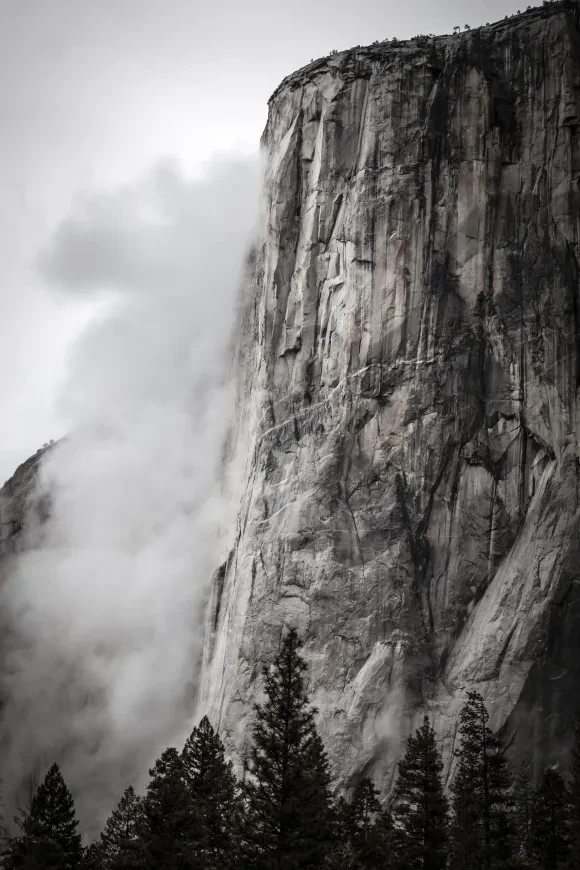
California state parks are born
President Abraham Lincoln signed legislation on June 30 giving Yosemite Valley and the nearby Mariposa Big Tree Grove to the state of California “upon the express conditions that the premises shall be held for public use, resort and recreation.” In September, Governor Frederick Low issued a proclamation accepting the federal land grant, creating the first state park in California and the nation. Yosemite is later returned to federal control and named a national park.
Parks system expands rapidly
After a decades-long crusade on behalf of California’s redwood forests, Governor Henry T. Gage signed a bill in March 1901 authorizing state funds to purchase acreage in Big Basin, which the following year became the first park in the current California state park system. As the 20th century unfolded, citizens and lawmakers took action to preserve more natural and historic treasures in California, creating a diverse system of state parks. In 1967, William Penn Mott, Jr. — former director of the National Park Service — became director of California State Parks.


California State Parks Foundation is founded
Director of California State Parks, William Penn Mott, Jr., rallied a core group of friends and park supporters to form California State Parks Foundation. They committed to improving the quality of life for all Californians by expanding access to the natural beauty, rich culture and history, and educational and health opportunities offered by California’s state parks. Over the course of our first 50 years, the organization built a dedicated community of over 70,000 members and raised more than $285 million to benefit state parks.
“We not only must live with our day-to-day decisions, but we must be responsible for long-range decisions, the results of which may not show up for several hundred years.” —William Penn Mott, Jr.
A historic church is rebuilt
When the Russian chapel at Fort Ross was destroyed by a fire in October 1970, California State Parks Foundation was asked to help fund the restoration of this historic church in Fort Ross State Historic Park. Fort Ross was officially restored in 1974.


The first of many land acquisitions for state parks
On December 23, 1971, through California State Parks Foundation, the people of California received a magnificent holiday gift — a new 4,100-acre state park, the purchase of which was made possible by the generous contributions and leadership of Henry F. Trione, a former California State Parks Foundation Board member. The park was originally named Annadel State Park, but in July 2016 the name was officially changed to Trione-Annadel State Park, recognizing Trione’s philanthropic efforts.
Commemorating the early cattle ranching days of California
The Pine Ridge Museum, a $100,000 museum building, was constructed by California State Parks Foundation and turned over to the Department of Parks and Recreation on May 17, 1972. Located in Henry W. Coe State Park in the hills near San Jose, the museum commemorates the early cattle ranching days of California.


Saving a rare ecological area for parks
When California State Parks Foundation purchased the 95-acre Los Osos oak grove near San Luis Obispo, this rare ecological area was added to the state park system. The property was deeded to the California Department of Parks and Recreation on June 29, 1972 and is now Los Osos Oaks State Natural Reserve.
Expanding parks for Los Angeles
California State Parks Foundation acquired 4,800 key acres in the Santa Monica Mountains, paving the way toward the creation of a large new urban park within the city limits of Los Angeles. The Foundation property linked together Will Rogers State Historic Park and Topanga State Park.

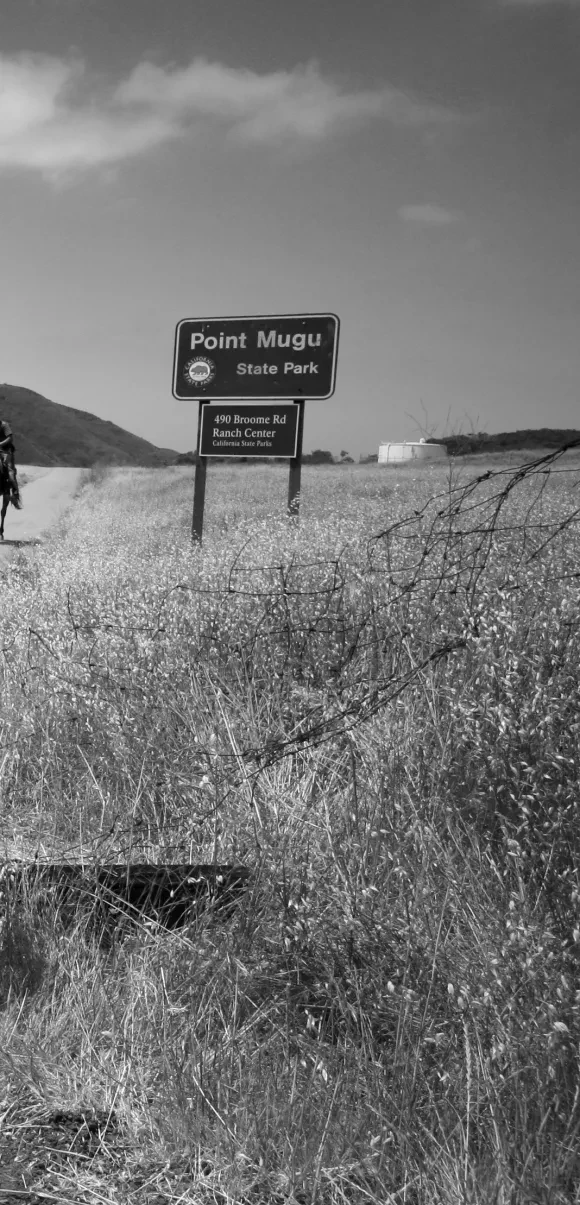
Adding to Point Mugu State Park
California State Parks Foundation received a gift of 80 acres of land adjacent to Point Mugu State Park. It was transferred to the state as an addition to the park.
A Junior Ranger program for state parks
A grant from California State Parks Foundation enabled the Department of Parks and Recreation to launch an innovative campaign encouraging young volunteers to help clean up state parks and educate people on the issue of litter in parks.


California’s first Poppy Park
In 1974, California State Parks Foundation purchased 940 acres of wildflower land and deeded it to the Department of Parks and Recreation. This became California’s first “Poppy Park” and would eventually be known as Antelope Valley California Poppy Reserve State Natural Reserve.
Protecting Native American rock paintings
In a limestone outcropping high above the city of Santa Barbara is an archeological wonder known as the Painted Cave. Painted by the Chumash Native American people, the cave walls are covered with colorful and intricate petroglyphs which are still in a remarkable state of preservation. Seven acres were purchased by California State Parks Foundation, and is now known as Chumash Painted Cave State Historic Park.


Helping to add China Camp State Park to the state park system
From the beginning, this park was one of the most beautiful and unspoiled natural settings on the bay, including the historic Chinese American shrimp-fishing village and a salt marsh. California State Parks Foundation took the title of China Camp and transferred the title to the state, creating China Camp State Park in 1976.
Restoring a historic hotel
The City Hotel in Columbia State Historic Park was known during gold mining days as “Queen of the Mother Lode.” State and federal funds and a grant from California State Parks Foundation restored the hotel to its original grand condition.


The power of membership
Our full-scale membership program began in 1977 with a goal of 1,000 members. Membership was evidence of personal support and involvement in the California State Parks system.
Expanding the mountain
A 256-acre portion of the saddle area of San Bruno Mountain, valued in excess of $26 million by its owners (Visitacion Associates), was donated to California State Parks Foundation and transferred to the state, becoming San Bruno Mountain State Park.


Restoration of a famous mill
California State Parks Foundation helped to fund the restoration of the Old Bale Grist Mill located in Napa Valley at Bale Grist Mill State Historic Park. First, the mill was dismantled, piece by piece. Each part was numbered, photographed, and, when necessary, sketched to show construction details. The result was a historically true reconstruction of the famous mill.
Restoration of a military hospital
Thanks to the interest and generous contributions of Paulina Harris, many activities and projects were able to take place at Fort Tejon State Historic Park, including the restoration of the military hospital.


Preservation of Old Town San Diego
Blacksmith art is dramatically preserved at Old Town San Diego State Historic Park. Construction of a blacksmith forge and the restoration of the wagons was made possible in part by a generous grant from the L.J. and Mary C. Skaggs Foundation, given through California State Parks Foundation.
Restoring Civil War–era buildings
At Angel Island State Park, California State Parks Foundation launched a campaign to restore West Garrison (a Civil War fort) and the historic hospital building.


Telling the story of the Mexican Californios and United States
California State Parks Foundation funded planning for San Pasqual Battlefield State Historic Park Visitor Center, telling the story of the Mexican Californios and United States through a series of displays.
Preserving thousands of artifacts
A contribution from the Hearst Foundation to California State Parks Foundation made it possible to photograph and catalogue the thousands and thousands of artifacts at Hearst San Simeon State Historical Monument. Telling the story of these priceless artifacts is the responsibility of trained tour guides that take visitors through the castle each year.


Inspiring youth actors in a historic building
In 1980, the California Department of Parks and Recreation accepted the title to the property of the Woodland Opera House, creating Woodland Opera House State Historic Park. The structural rehabilitation of the building was completed in 1982. The community was challenged to complete the interior restoration, and California State Parks Foundation joined with the local committee to raise the necessary $750,000 so that the historic structure might once again be a living, working theatre — inspiring budding young actors and musicians and providing the city of Woodland and surrounding communities with a fine historic and cultural resource.
The poppy park gets a new visitor center
In 1982, the visitor center was completed at the Antelope Valley California Poppy Reserve State Natural Reserve, a 2,500 acre preserve near Lancaster. The building was dedicated in honor of Jane Pinheiro, one of the many volunteers who, over a period of years, worked tirelessly to bring the dream of forever preserving a field of California poppies to a reality.
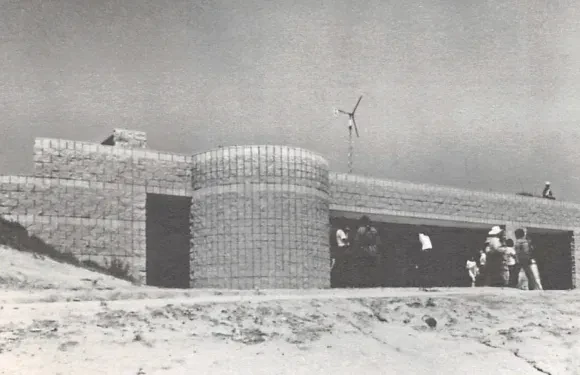

Restoring the Marconi property
Originally, the Marconi Station was responsible for communication with and between ships in the Pacific Ocean. Rapid advances in technology made the Marconi center obsolete for its original purpose, yet the buildings were in excellent shape with breathtaking views. California State Parks Foundation took over the Marconi property to rebuild and restore it into a retreat and conference center. It is now Marconi Conference Center State Historic Park with views of Tomales Bay and Mt. Tamalpais.
Protecting unique azaleas and parks
Stagecoach Hill was preserved so its unique beauty would be preserved for the enjoyment and education of future generations of Californians. At this location, thousands of self-hybridizing azaleas grow in infinite colors, sizes, and shapes. Botanists come from all over the world to study this unique flower forest. California State Parks Foundation aided in purchasing the most critically needed land to permanently protect the azaleas, located in Humboldt Lagoons State Park.


Preserving the ranch of an American writer
Jack London State Historic Park first opened in 1960. California State Parks Foundation helped with a fundraising campaign to restore several of the structures on the London Beauty Ranch, including the cottage where London lived and wrote.
Telling the stories of Miwok Native Americans and Russian settlers
The visitor center at Fort Ross State Historic Park was finished, a joint effort of California State Parks Foundation and the Fort Ross Interpretive Association (now Fort Ross Conservancy). Displays tell the story of the Miwok Native Americans, who were the original settlers in the area, and Russia’s attempt to develop a settlement in California.


Expansion of desert park in Southern California
Anza-Borrego Desert State Park, the largest state park in the United States, received land and interpretive displays from California State Parks Foundation through a donation of 316,000 acres from the William B. McWhirter Family.
New interpretative center at Mt. Diablo
California State Parks Foundation launched a campaign to build the interpretive center at Mt. Diablo State Park, so future generations would be able to learn about its unique history.


Fostering an appreciation for nature
California State Parks Foundation sponsored hiking and camping programs for middle school students at Nimitz Junior High School, the largest junior high school in California, at Point Mugu State Park. California State Parks Foundation has always wished to instill a sense of love and appreciation for nature in the children of California.
California State Parks Foundation supports programming to get families into parks
FamCamp® was launched in conjunction with the Department of Parks and Recreation to provide low-income families with greater access to California’s state parks. By working in partnership with community organizations, schools, churches, group homes, mentor organizations and youth development organizations, it broke down social and financial barriers for underprivileged families by providing a group camping trip. For many of these urban families, FamCamp® was their first time camping and experiencing the natural beauty and solitude of state parks.
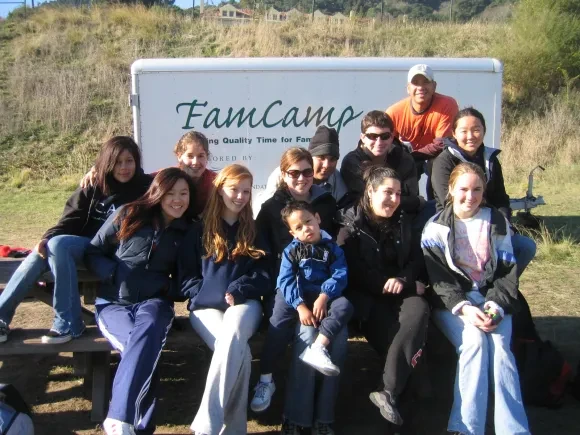
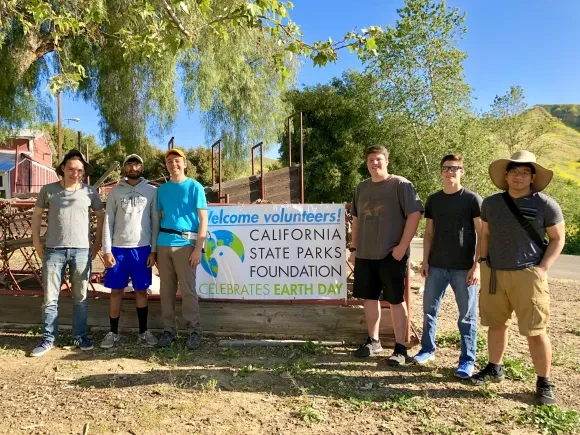
The first annual Earth Day celebration
California State Parks Foundation launched the Earth Day Restoration and Cleanup Program. Statewide, thousands of volunteers each year plant native trees and community gardens, restore trails and wildlife habitats, remove trash and debris from parklands, and make repairs to fences and boardwalks.
California State Parks Foundation supports Proposition 12 and becomes an advocacy organization
Our board of trustees supports Proposition 12, "Safe Neighborhood Parks, Clean Water, Clean Air and Coastal Protection Bond Act of 2000" (2000 Bond Act) thereby becoming an advocacy organization. These efforts led to Proposition 12 being voted in by 63.2 percent of voters on March 7, 2000. Voters passed Proposition 12 by 63.2 percent, providing $2.1 billion in funding for local grant assistance.
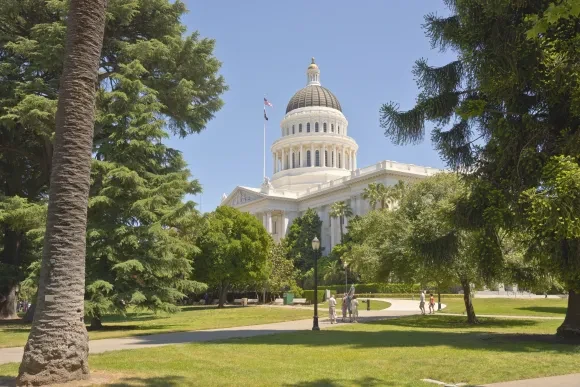

Preservation of a historic home
On Lake Tahoe at the head of Emerald Bay State Park, you’ll find Vikingsholm. The magnificent “castle” was built in 1929 and is one of the finest examples of Scandinavian architecture in the United States. In 2000, California State Parks Foundation began upgrading the residence’s 80-year-old electrical system to better preserve the historic home. Within the state parks system, historic buildings have typically been under-funded, and we work to ensure these places remain preserved and pristine.
California State Parks Foundation supports Proposition 40
The California State Parks Foundation Board of Trustees supported Proposition 40, contributing to the bill being passed by 56.8 percent of the vote. The $2.6 billion "California Clean Water, Clean Air, Safe Neighborhood Parks, and Coastal Protection Act of 2002" (2002 Resources Bond Act) provided funds for local assistance grants.


Yosemite Slough is marked for restoration
In 1977, Candlestick Point became California’s first urban park. Located in southeastern San Francisco, residents envisioned a “state park for the people.” In 2002, we partnered with the Department of Parks and Recreation to restore a large wetland area of the park known as Yosemite Slough. As the project lead, we have continued to raise the funds needed to help transform Candlestick Point State Recreation Area into a model urban park.
Efficiency of land acquisition initiatives increases thanks to new bill
California State Parks Foundation drafts bill AB2401, allowing parks to work more efficiently and effectively to acquire and protect land.


California State Parks Foundation hosts the first annual Park Advocacy Day in Sacramento
The first Park Advocacy Day is held in Sacramento with more than 130 activists attending. Park Advocacy Day brings together thousands of individuals who have lobbied policymakers in support of park protection, increased access, sustainable funding, and important park issues on behalf of California’s state parks.
Park protection for Henry Coe
We participated in a coalition with Friends of Henry Coe which successfully opposed a proposed high-speed rail line that would have bisected Henry W. Coe State Park’s 23,000-acre wilderness area.


California State Parks Foundation launches Bay Youth for the Environment
California State Parks Foundation launched Bay Youth for the Environment (BYE) in partnership with the youth empowerment and advocacy group Literacy for Environmental Justice (LEJ). It is a unique urban park revitalization and community stewardship program at Candlestick Point State Recreation Area in southeastern San Francisco. The three main goals of BYE are to provide local youth with rigorous environmental training and work opportunities, build community involvement, as well as create a successful urban park stewardship model that can be adopted by urban communities and state parks throughout California.
Parks Online Resources for Teachers and Students
The Parks Online Resources for Teachers and Students (PORTS) statewide program began in 2004 as a collaboration between California State Parks and the California public school system. This alliance put the great outdoors into the classroom through videoconferencing with Park Rangers and Park Interpreters, as well as augmenting a school districts’ environmental science courses with enhanced curriculum. Videoconferencing allowed park professionals to engage and interact with the students on a personal, customized basis.


Next generation of environmental stewards and scientists
California State Parks and the California Institute for Biodiversity (CIB), launched Coast Alive! in 2004 to reinvigorate science teaching in California, as well as inspire the next generation of environmental stewards, scientists and technological innovators. Coast Alive! was one of a series of regional science education programs throughout California that strategically combined standards-based, high tech classroom materials with local field experiences in California’s state parks and other natural areas in order to improve science teaching and maximize student learning and interest in science.
California State Parks Foundation leads effort for Año Nuevo Marine Education Center
Up to 10,000 elephant seals visit Año Nuevo State Park every year to breed, have pups and rest before they return to sea. The park attracts thousands of visitors each year for its interpretive programs and abundant wildlife. In 2005, California State Parks Foundation led the fundraising effort for the Año Nuevo Marine Education Center, which features interactive exhibits and a space to train over 200 volunteer docents.


A campaign to save Pigeon Point Lighthouse
In 2005, California State Parks Foundation launched a campaign — Light up the Future — to restore and reopen Pigeon Point Light Station State Historic Park, which was closed to the public in 2001. More than a century of severe coastal weather has taken its toll on the historic structure — the tallest and most photographed lighthouse on the West Coast. Many key goals to preserve the lighthouse were accomplished including: structural analysis and developing a comprehensive rehabilitation plan, an emergency stabilization effort, a historic structures report, and a maintenance plan; drafting of construction drawings for the full lighthouse, safely removing the 17-foot tall, 2,000-pound first order Fresnel lens from Pigeon Point’s lantern room; and replacing and restoring windows and frames throughout the lighthouse.
Yes on 84: Improvements to the state parks system
Beginning in 2005, California State Parks Foundation has been at the forefront of this important effort to provide capital funding for state park’s natural resources. California voters passed the bond in November 2006, which provided $400 million for improvements to the state parks system. Bond funds were primarily used for capital projects and acquisitions, which were an important addition to the critical maintenance and operations support.


Protecting the desert from development
In 2007, California State Parks Foundation weighed in with the California Public Utilities Commission (CPCU) against proposed construction of a new electricity transmission line through Anza-Borrego Desert State Park. California State Parks Foundation participated in briefings, public hearings, and eventually testimony before the CPCU regarding the proposed Sunrise Powerlink’s harmful effects to the park.
Protecting Colonel Allensworth State Historic Park from development
California State Parks Foundation partnered with organizations including Friends of Allensworth, Allensworth PALS and the Planning and Conservation League to stop a mega-dairy proposal from generating water, air and noise pollution next to Colonel Allensworth State Historic Park. An agreement was reached that prohibited the development of any mega-dairies on private land outside the park.


Partnership to protect and improve Silver Strand State Beach
Silver Strand State Beach continues to remain in good condition through the generosity of Loews Coronado Bay Resort, which sits next to the state beach and, since 2007, has donated over a $1 million (and counting) through an innovative partnership to maintain and beautify the state beach. Every month, Loews donates a small portion of each guest’s bill into the Loews Environmental Fund which is administered by California State Parks Foundation. This fund allows the state beach to proceed with maintenance, conservation and beautification projects.
Protecting parks in the Big Lagoon Area
California State Parks Foundation lobbied the Legislature to approve a Governor-negotiated agreement to protect the Big Lagoon area, including three neighboring state parks (Humboldt Lagoons State Park, Sue-Meg State Park [formerly, Patrick’s Point State Park], Harry A. Merlo State Recreation Area) from a casino proposal — and to allow the Big Lagoon Rancheria tribe to develop casino gaming elsewhere in the state and avoid impacts to these three north coast parks.

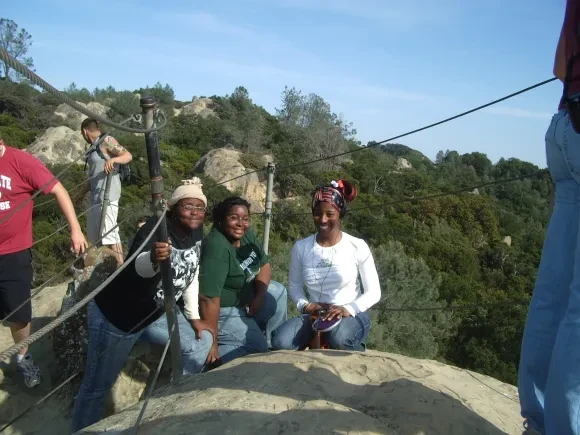
Outdoor Youth Connection
Outdoor Youth Connection (OYC) is launched as a collaborative effort of the Department of Parks and Recreation, California State Parks Foundation and the Pacific Leadership Institute. Using the outdoors as a tool, OYC works with teens aged 14 to 17 who are involved in community-based organizations to develop leadership and life skills while camping at a state park. The program includes opportunities for teambuilding, decision making, communication and hands-on experience in the outdoors. They learned outdoor skills and activities, going on to lead their own outdoor trips and service projects for their peers and community.
Improvements for Watts Towers
California State Parks Foundation secured funds for an entrance beautification project at Watts Towers of Simon Rodia State Historic Park, located in southeast Los Angeles County.


48 state parks threatened with closure
Former Governor Schwarzenegger’s fiscal year 2008-09 budget proposal included a $13.1 million reduction of General Fund support for state parks. Threatened cuts would have closed 48 parks and reduced lifeguard staffing at 16 state beaches. In response, California State Parks Foundation launched Save Our State Parks, a grassroots campaign to engage more Californians in protecting parks. Activities around the state aimed to raise awareness about threatened park closures, service reductions and unacceptable budget proposals, and to inspire people who love parks to take action. In May, the governor reversed his proposal.
California State Parks Foundation supports permanent parks funding solution
California State Parks Foundation backed the California State Park Access Pass proposed by Assembly member John Laird. By instituting a $10 surcharge on vehicle license fees, the program would have provided a sustainable funding source for the state parks system while offering Californians free day-use access to their state parks. Unfortunately, the State Park Access Pass failed to be approved twice as part of the 2008-09 and 2009-10 budget proposals and eventually became 2010 ballot measure Proposition 21 which also fails to be passed by voters.
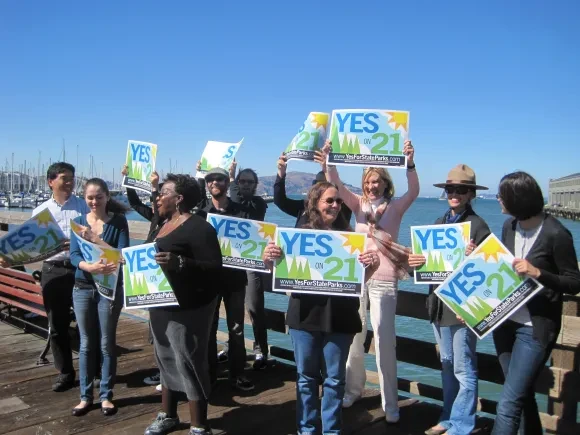

Hidden Stories series: 100 Years Since Allensworth
Hidden Stories, a conference series, is designed to address the unmet need for discovery, examination and dissemination of various ethnic and national group contributions to parks. The inaugural Hidden Stories conference, entitled “100 Years Since Allensworth: Is California Living Up To The Legacy?” was a smashing success. The conference focused on African-Americans and their unknown stories in the foundation of the state parks system. Highlights included the fascinating story of James Beckwourth, explorer extraordinaire; an account of the Monroe-Gooch family of Coloma, from whom Sutter’s Fort and Marshall’s gold discovery site were acquired and in a more modern vein, a great presentation on Bruce’s Beach and the history (and future) of African-American surfers.
Summer Enrichment Program
In 2009, the David and Lucile Packard Foundation generously funded a pilot program to introduce the educational benefits of California's state parks to youngsters in Oakland, Gilroy and Fresno. The Packard Foundation worked with California State Parks Foundation and the California Department of Parks and Recreation to build relations and extend resources to these underserved communities where kids are often at risk of a "learning gap" during the summer months.


Parks funding reduced by $39 million
Former Governor Schwarzenegger announced additional state budget cuts for fiscal year 2009-10, including the complete elimination of General Fund support for state parks. A proposal is advanced to close 220 state parks — 80 percent of the entire state parks system. With the additional impact of furloughs, lost revenue and other cuts, state parks experience a total reduction of $38.6 million, resulting in partial or seasonal closures and reduced staffing and maintenance across the entire park system. Through our advocacy efforts all year long, as well as Park Advocacy Day, we rallied communities across the state to keep parks open.
Protecting Los Angeles state parks from non-mission use
In partnership with a broad, multicultural and economically diverse group of community, environmental, civil rights and civic leaders, California State Parks Foundation raised concerns regarding the proposed high-speed rail line through downtown Los Angeles, which would effect both Los Angeles State Historic Park and Rio de Los Angeles State Park.


Preventing transmission lines through a state park
A wind energy project was proposed that would run approximately 173 miles from Kern County all the way to the Los Angeles basin. One of the suggested routes was moving the line into Chino Hills State Park. California State Parks Foundation worked on this project since 2006, filed briefs, attended meetings, and offered testimony. In December 2009, it was decided to not put the line through the state park, keeping the integrity of the park intact.
Providing critical park volunteer support statewide
In response to severe budget cuts, reduced resources and threatened park closures, California State Parks Foundation launched a volunteer program, which brings volunteers to parks across the state to work on vital restoration, construction, and maintenance projects. These volunteers provide consistent, sustainable support to improve the quality, safety and preservation of our state parks.


California State Parks Foundation issued a vision for excellence report
To create a roadmap for state parks at a crossroads, California State Parks Foundation, in partnership with the Save the Redwoods League, completed the Park Excellence Project. A statewide survey, telephone poll, outreach to key park constituency groups and interviews with experts from other park systems brought important perspectives. The project’s Vision for Excellence for California’s State Parks identified five key areas to restore excellence in our parks: make parks relevant, increase access for all, defend park lands and resources, broaden park leadership and strengthen and diversify funding.
70 parks placed on closure list
Despite objections from California State Parks Foundation and others, Governor Brown’s 2011-12 budget proposal called for a $22 million reduction in General Fund support for the Department of Parks and Recreation (DPR), $11 million in fiscal year 2011-12 and an additional $11 million in fiscal year 2012-13. In May, DPR released a list of 70 parks it would close by July 1, 2012, as a result of these cuts. California State Parks Foundation reported that this devastating reduction would result in the closing of more than 40 percent of the state’s historic parks, with closures in 36 of California’s 58 counties. California State Parks Foundation worked to keep these parks open by rallying Californians to use their voice to show how important our state parks are to them.


Yosemite Slough wetlands are restored
California State Parks Foundation secured more than $21 million and successfully completed the most ambitious phase of the project at Candlestick Point State Recreation Area. The North Side Wetlands Restoration project, which broke ground in June 2011, was successfully completed within 12 months. A section of the Bay Trail along the northern shoreline was completed in October 2012.
Legislation advances to support threatened parks
Working with California legislators, California State Parks Foundation sponsored Assembly Bill (AB) 42, a bill that gave the Department of Parks and Recreation authority to enter into operating agreements with qualified nonprofit organizations, allowing qualified partners to step in and keep particular parks on the closure list open. Citizen input organized through our Save Our State Parks campaign helped convince lawmakers of the bill’s urgency. Governor Brown signs AB 42 as parks begin to close, opening the door for community partners to steward state parks.


Closing Parks Is Bad for Business launched
On November 1, 2011, California State Parks Foundation capitalized on a scheduled legislative hearing in Sacramento to create another grassroots SOS campaign event — a march from the historic Leland Stanford Mansion State Historic Park to the steps of the capitol. State park supporters took to the streets to unite against the closure of 70 state parks and rally on the steps of the capitol to raise awareness of the negative impacts of park closures. We also used the occasion to kick off our “Closing Parks Is Bad for Business” campaign.
Park supporters reacted to permanent $22 million cut
California State Parks Foundation launched Defend What’s Yours, a public awareness campaign about park closures. The final budget approved in June preserved some funding for California’s cash-strapped state parks and created an opportunity to finalize agreements to keep more of the 70 parks open, effectively pushing off the July 1 deadline for park closures.


California State Parks Foundation launched a Technical Assistance Center
The Technical Assistance Center (TAC) increased the capacity, ability, and effectiveness of park partners and enabled new management and funding models to achieve excellence in California’s state parks. It grew to over 100 park partners (nonprofit organizations, local government agencies, and others) that supported state parks via new operating agreements, donor agreements, or other formalized relationships.
Helping save 29 parks from closure by awarding grants
In May and June, California State Parks Foundation awarded two rounds of grants totaling $835,606 to organizations fighting to keep state parks off the closure list. This new grant program — made possible by generous funding from the S. D. Bechtel, Jr. Foundation, the Thomas J. Long Foundation, and other supporters — enabled community partners to partially or fully operate or fund state parks. By working together closely to provide these vital resources, California State Parks Foundation and park partners save 29 state parks from closure.


Parks Forward Initiative launched
The Parks Forward Initiative was announced in June 2013 by the California Natural Resources Agency and the California Department of Parks and Recreation. This collaborative initiative worked to address the short and long-term needs of California’s state parks and establish a new direction for the state parks system for current and future generations.
Hidden Stories series: Layers of Latino/a History
On October 2 and 3, 2013, California State Parks Foundation held its third Hidden Stories series conference at the Center for Healthy Communities at the California Endowment in downtown Los Angeles. Attendees enjoyed interesting speaker panels, walking tours of murals and landmarks, and group discussions about the hidden stories of Latinos in California history in the context of state parks. The Conference showcased panel discussion and Q&A in three main areas — Narrators of California: Women and their Families in Historic Communities, Do You Want to Be My Neighbor: Parks and the Evolution of Historic Latino Neighborhoods, Ethnicity, Identity and Place: California's Historic Latino Population.


San Onofre saved
After almost 15 years of pitched battle between the Save San Onofre Coalition and the Transportation Corridor Authority, the fight over San Onofre State Beach finally came to an end on November 10. We celebrated a major environmental victory protecting San Onofre State Beach from a toll road development that would have permanently closed 60% of the park and ended public access to the campground and the world-famous Trestles Beach.
Los Angeles State Historic Park opens
California State Parks Foundation's involvement began in 1999, when we joined a coalition of groups calling for a new vision of state parks in urban areas. Our advocacy efforts paid off in 2001 when the Department of Parks and Recreation purchased the Los Angeles State Historic Park site. We remained involved over the years, providing input for the park’s master plan in 2003 and facilitating its design competition in 2006. During the state budget crisis following the 2008 recession, California State Parks 15 Foundation advocated to restore state park funding. And lastly in 2017, our dedicated volunteers planted thousands of trees and bushes to help open the park.


Two volunteers hit 100 workdays
In spring 2017, two of our most dedicated volunteers were the first to celebrate the milestone of volunteering 100 times. The first, Bob Fox, learned about our volunteer program in 2011. He jumped right into our Core Leader program of dedicated volunteers who help coordinate and manage workdays. And second, Ada Wong retired in 2013 and signed up to volunteer as a way to give back to the state parks where she’d enjoyed camping for decades.
Proposition 68 passed
With 57.4% marking “yes” on their ballots this June, voters passed Proposition 68, the largest investment in natural resources and underserved communities in California history. In a lean, grassroots campaign, California State Parks Foundation collaborated with partners to mobilize our collective communities to reach more than 3.8 million people who voted Yes on 68 through word-of-mouth, press coverage and more. This victory was won by the strength of our networks and advocates on the ground ensuring Californians’ voices would be heard.


Research on Pathways to Parks
Over the past year, California State Parks Foundation has been working with a team of researchers from the Institute of the Environment and Sustainability at UCLA to learn more about how state parks can improve the lives of children while fostering the next generation of park stewards. The UCLA team analyzed the “visitorsheds” of all state park units in California — that is, the communities around each park that are accessible by a typical walk, bike ride or drive. Their preliminary results have found that California’s state parks are a tremendous, potentially underutilized resource for youth, and indicates a path toward making our parks more accessible for younger generations of Californians.
Today: Thanks to our supporters and partners, we champion your California, no matter how much it may change.
Our parks face many threats, and we have an ambitious list of projects to make them healthier and more resilient. Among the items on it are ensuring parks are protected, advocating for adequate and sustainable funding, adding new ways to inspire youth in parks and reaching even more parks with volunteer programs. We also face the challenge of helping more Californians access our parks — because we believe parks are for everyone!
Help California State Parks Foundation protect, preserve and restore our beautiful state parks by donating today!